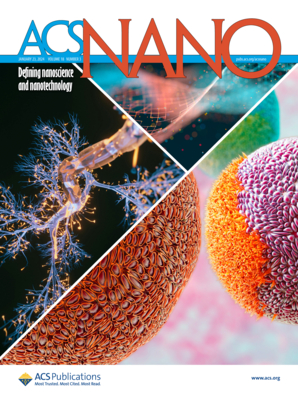Wafer-Scale Transfer and Integration of Tungsten-Doped Vanadium Dioxide Films
IF 15.8
1区 材料科学
Q1 CHEMISTRY, MULTIDISCIPLINARY
引用次数: 0
Abstract
Modern optoelectronic devices trend toward greater flexibility, wearability, and multifunctionality, demanding higher standards for fabrication and operation temperatures. Vanadium dioxide (VO2), with its metal–insulator transition (MIT) at 68 °C, serves as a crucial functional layer in many optoelectronic devices. However, VO2 usually needs to grow at >450 °C in an oxygen-containing atmosphere and to function across its MIT temperature, leading to low compatibility with most optoelectronic devices, especially on flexible substrates. In this work, we report a layer-by-layer transfer method of wafer-scale tungsten-doped VO2 films, which enables sequential integration of the VO2 films with low MIT temperatures (down to 40 °C) onto arbitrary substrates. Notably, by stacking multiple VO2 films with different doped levels, a quasi-gradient-doped VO2 architecture can be achieved, effectively broadening the MIT temperature window and reducing the hysteresis of VO2. These integrated VO2 films find a wide scope of applications in flexible temperature indicator strips, infrared camouflage devices, nonreciprocal ultrafast light modulators, and smart photoactuators. Our work promotes the development of more flexible and tunable optoelectronic devices integrated with VO2.

求助全文
约1分钟内获得全文
求助全文
来源期刊

ACS Nano
工程技术-材料科学:综合
CiteScore
26.00
自引率
4.10%
发文量
1627
审稿时长
1.7 months
期刊介绍:
ACS Nano, published monthly, serves as an international forum for comprehensive articles on nanoscience and nanotechnology research at the intersections of chemistry, biology, materials science, physics, and engineering. The journal fosters communication among scientists in these communities, facilitating collaboration, new research opportunities, and advancements through discoveries. ACS Nano covers synthesis, assembly, characterization, theory, and simulation of nanostructures, nanobiotechnology, nanofabrication, methods and tools for nanoscience and nanotechnology, and self- and directed-assembly. Alongside original research articles, it offers thorough reviews, perspectives on cutting-edge research, and discussions envisioning the future of nanoscience and nanotechnology.
 求助内容:
求助内容: 应助结果提醒方式:
应助结果提醒方式:


